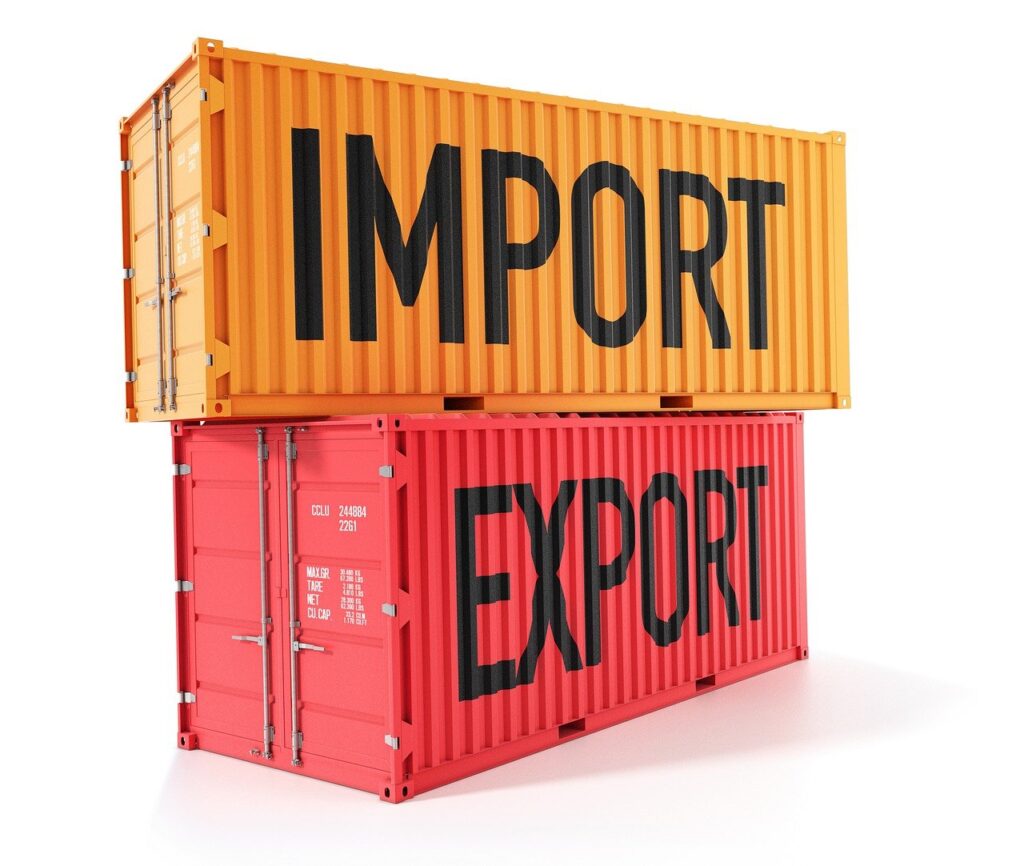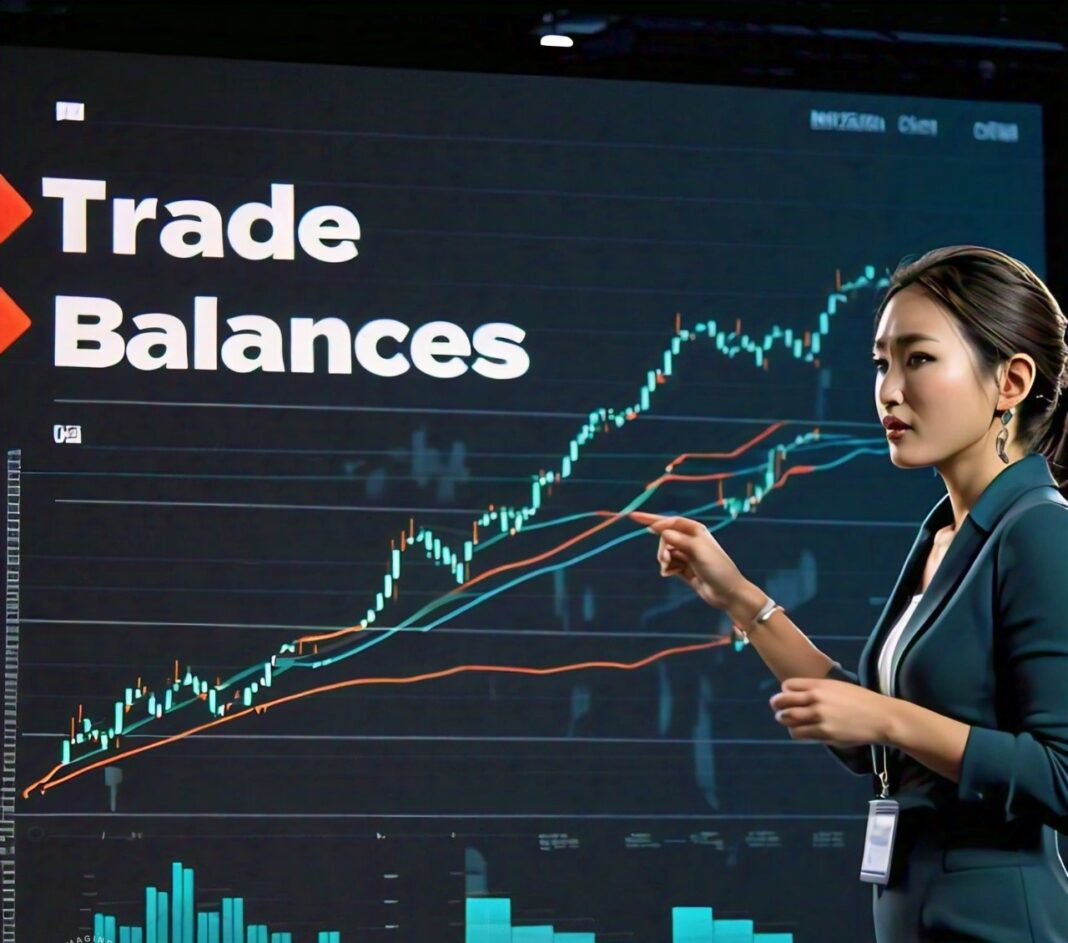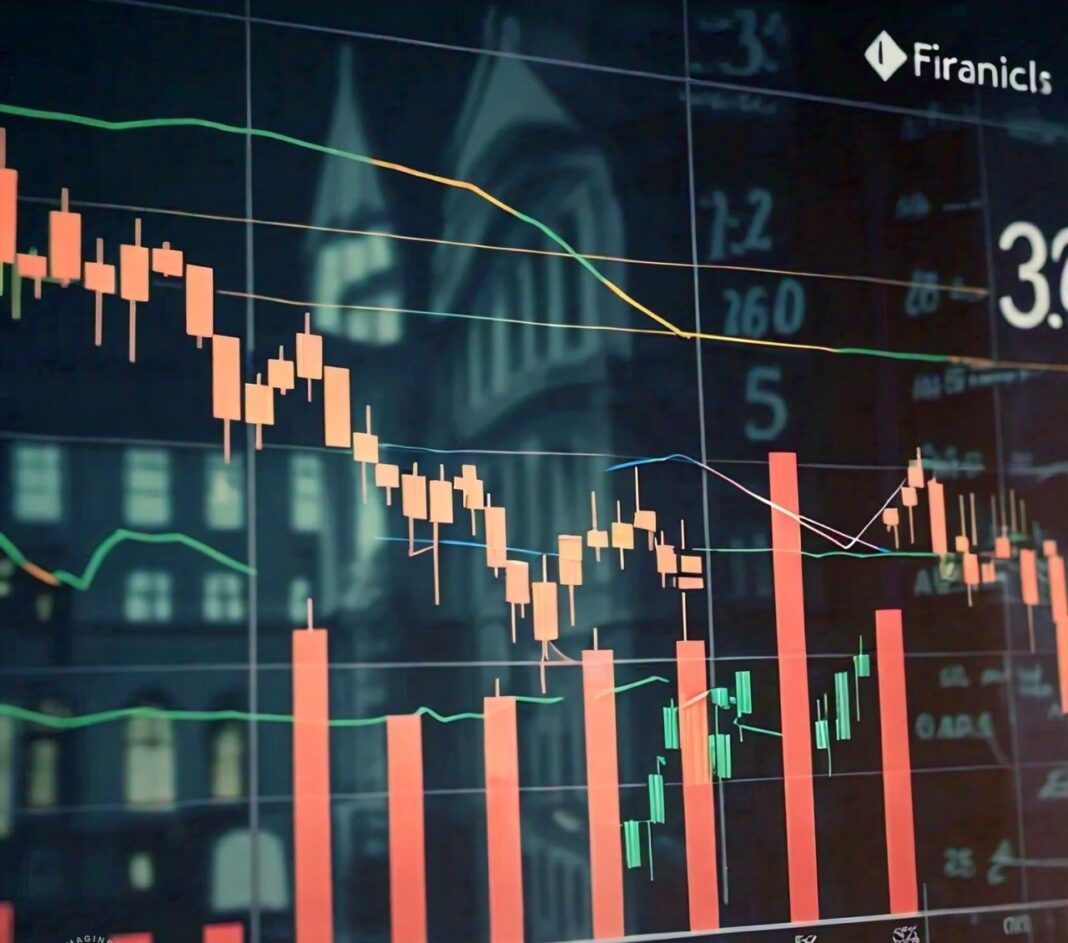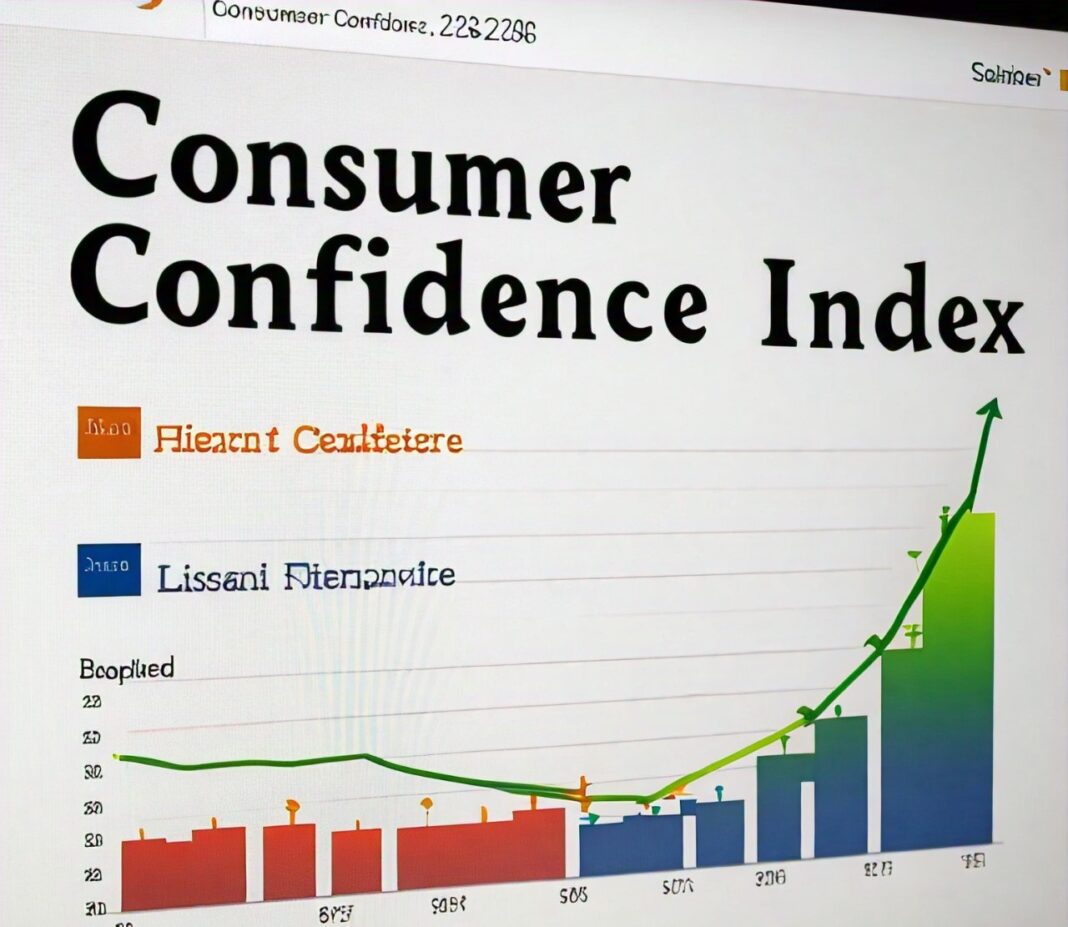Trade balances play a crucial role in understanding the economic landscape of a country. Defined as the difference between a nation’s exports and imports, a trade balance can indicate whether a country is operating at a surplus (more exports than imports) or a deficit (more imports than exports). This metric not only reflects the health of a nation’s economy but also serves as a vital component for financial analysts aiming to make informed investment decisions.
In the context of financial markets, trade balances are more than just numbers; they provide insights into economic stability and growth potential. For instance, a persistent trade surplus may suggest a competitive economy capable of producing goods and services that are in high demand internationally. Conversely, a significant trade deficit might raise concerns about a country’s economic viability, prompting analysts to scrutinize underlying factors such as consumer behavior, currency strength, and overall economic policies.
This article aims to delve deeper into how trade balances influence market trends, currency values, and investment strategies. By examining the intricate relationships between trade balances and various economic indicators, we will uncover the implications for financial analysts who rely on this information to guide their assessments and decisions. Understanding these dynamics is essential for navigating the complexities of the global market, as trade balances serve as critical indicators of economic performance and stability.
As we explore this topic further, we will highlight the importance of incorporating trade balance data into financial analyses, ultimately equipping analysts with the tools needed to respond to shifting market conditions effectively.
Understanding Trade Balances
What is a Trade Balance?
The trade balance is a vital economic indicator defined as the difference between the monetary value of a country’s exports and imports over a specific period. It can be expressed mathematically as:
Trade Balance = Exports – Imports
A positive trade balance, known as a trade surplus, occurs when exports exceed imports. This indicates that a country is selling more goods and services to foreign markets than it is purchasing from them, leading to a net inflow of funds. Conversely, a trade deficit arises when imports surpass exports, suggesting a country is buying more than it is selling, resulting in a net outflow of funds.
Understanding trade balances is essential for financial analysts because they offer insights into a country’s economic vitality and competitiveness. A surplus can indicate strong demand for a country’s products, while a deficit might suggest reliance on foreign goods, potentially impacting currency strength and economic stability.

Types of Trade Balances
Trade balances can be categorized primarily into two types:
- Trade Surplus: A situation where exports exceed imports. Countries with a trade surplus, such as Germany and China, often experience increased foreign investment and stronger currencies due to their robust manufacturing and export capabilities.
- Trade Deficit: This occurs when imports exceed exports. The United States frequently runs trade deficits, particularly with countries like China. While this can indicate consumption strength, it may also raise concerns about long-term economic sustainability.
Measuring Trade Balances
To analyze trade balances effectively, several tools and metrics are employed:
- Balance of Payments (BOP): This comprehensive record includes all economic transactions between residents of a country and the rest of the world, helping analysts understand the broader implications of trade balances.
- Trade Data Reports: Governments and international organizations, such as the World Trade Organization (WTO) and the International Monetary Fund (IMF), publish regular reports that provide up-to-date statistics on trade balances, allowing analysts to track trends and make forecasts.
- Economic Indicators: Analysts often compare trade balances with other economic indicators, such as Gross Domestic Product (GDP), inflation rates, and employment figures, to get a holistic view of economic health.
You can also Read: How Trade Sanctions are Affecting Global Markets
Trade Balances and Market Trends
Correlation with Economic Performance
Trade balances are closely correlated with a country’s overall economic performance. A consistent trade surplus can indicate a healthy economy, as it suggests strong production capabilities and demand for exports. For example, countries like Germany and Japan have historically maintained trade surpluses, reflecting their competitive manufacturing sectors and strong global demand for their products.
Conversely, a persistent trade deficit can signal economic vulnerabilities. For instance, the United States has experienced significant trade deficits, particularly with China. This trend may indicate a reliance on foreign goods and services, which can raise concerns about domestic production capabilities and long-term economic stability. Analysts often monitor these trends to gauge economic health and make informed investment decisions.
Impact on Stock Markets
The relationship between trade balances and stock market performance is significant. Positive trade balance reports can boost investor confidence, leading to higher stock prices, particularly in export-driven sectors. For example, when Japan reports an increase in its trade surplus, it often results in a surge in the stock prices of Japanese companies engaged in manufacturing and exports.
On the other hand, negative reports can lead to market declines. A widening trade deficit may prompt concerns about economic weakness, affecting investor sentiment and leading to stock sell-offs. Historical data shows a pattern where stock markets react to trade balance announcements, emphasizing the importance of these metrics in market analysis.
Currency Values and Trade Balances
Exchange Rate Dynamics
Trade balances play a significant role in determining currency values. A country with a trade surplus generally experiences an appreciation of its currency, as foreign buyers need to purchase the domestic currency to pay for the exported goods. Conversely, a trade deficit can lead to currency depreciation, as the demand for foreign currencies increases to pay for imported goods.
For example, when Japan consistently reports a trade surplus, the demand for the yen increases, often leading to its appreciation against other currencies. This dynamic can have broader implications for global trade, affecting everything from consumer prices to investment returns.
Historical Instances of Currency Fluctuations
Several historical cases illustrate the impact of trade balances on currency values:
The Eurozone Crisis: During the Eurozone crisis, countries like Greece experienced significant trade deficits. The resultant concerns about economic stability contributed to the depreciation of the euro, affecting trade relations within the region. Analysts observed that currency fluctuations tied to trade imbalances influenced investor sentiment and market conditions.
China’s Currency Policy: China’s trade surplus has historically prompted discussions about its currency valuation. The Chinese government has been criticized for keeping the yuan undervalued to promote exports. This manipulation has implications for global markets, as fluctuations in the yuan can affect trade balances and economic relationships worldwide. For detailed analysis, the People’s Bank of China provides insights into currency policy and trade impacts.
Implications for Forex Trading
Understanding the relationship between trade balances and currency values is crucial for forex traders. Trade balance reports are significant economic indicators that traders watch closely. A positive trade balance might prompt traders to buy the currency, anticipating appreciation, while a negative trade balance could lead to selling pressures.
Traders often use technical analysis alongside trade balance data to develop strategies. For example, if the U.S. reports a widening trade deficit, forex traders might anticipate a decline in the U.S. dollar’s value, leading them to short the currency. Resources like Investopedia offer comprehensive guides on trading strategies based on economic indicators, including trade balances.

Trade Balances and Currency Fluctuations
Influence on Currency Value
Trade balances play a crucial role in determining a country’s currency value. A trade surplus typically strengthens a nation’s currency because it indicates higher demand for its goods and services, leading to increased foreign capital inflow. For instance, when Japan reports a trade surplus, the yen often appreciates as foreign buyers purchase more Japanese exports, thus converting their currencies into yen.
Conversely, a trade deficit can weaken a currency. If a country imports more than it exports, it may lead to an oversupply of its currency in foreign exchange markets, ultimately driving down its value. The United States, with its persistent trade deficits, often sees fluctuations in the dollar’s strength, especially against currencies of countries with trade surpluses.
Market Reactions to Trade Balance Reports
Financial markets react swiftly to trade balance announcements. Positive trade balance news can lead to immediate appreciation of the associated currency, as traders anticipate economic stability and growth. For example, when the Eurozone reports a trade surplus, the euro often rallies against other currencies, reflecting investor confidence.
On the other hand, negative trade balance data can trigger quick sell-offs. If a country’s trade deficit widens unexpectedly, it can lead to a decline in that country’s currency as traders adjust their positions based on perceived economic weakness. Historical trends indicate that currency traders closely monitor trade balance reports to make informed trading decisions.
Investment Decisions and Trade Balances
Investment Strategies Based on Trade Data
Trade balances provide critical insights that can inform investment strategies. Financial analysts often leverage trade balance data to gauge the economic outlook of a country and to predict potential market movements. A country consistently showing a trade surplus may indicate a strong economy, making it an attractive option for investors seeking stable returns. For example, if Germany continues to report trade surpluses, investors might feel confident in allocating funds toward German equities or bonds, anticipating growth in these markets.
Conversely, a persistent trade deficit may raise red flags for investors. Analysts might view this as a signal to avoid investments in a country showing economic vulnerability. By analyzing trade data alongside other economic indicators, such as GDP growth and unemployment rates, investors can develop a more comprehensive understanding of a country’s investment landscape.
Sector-Specific Impacts
Different sectors respond uniquely to changes in trade balances. For instance, industries heavily reliant on exports, such as technology and manufacturing, may benefit significantly from a trade surplus. Companies in these sectors often experience increased profit margins and stock price appreciation when demand for their products rises in international markets.
On the other hand, sectors that rely on imports, like consumer goods or electronics, may face challenges during periods of trade deficits. Rising import costs can squeeze profit margins, leading to decreased stock performance. Analysts often delve into sector-specific trade data to identify investment opportunities or risks, tailoring their strategies to align with these dynamics.
Risk Assessment
Understanding trade balances is crucial for risk assessment in investment portfolios. A widening trade deficit can signify economic stress, increasing the likelihood of currency depreciation and inflation. For instance, during economic downturns, countries with significant trade deficits may find it challenging to maintain currency stability, which can adversely affect investments.
Moreover, trade imbalances can lead to geopolitical tensions that may impact investments. For instance, trade disputes between major economies can create uncertainty, prompting analysts to reassess risks associated with investments in affected regions. Keeping abreast of trade balance data allows investors to make informed decisions about managing risk and diversifying their portfolios.

Trade Balances as Indicators of Economic Stability
Economic Stability Indicators
Trade balances serve as a crucial indicator of a country’s economic stability. A consistent trade surplus often reflects a robust economy capable of producing goods that are in demand globally. This not only supports domestic employment but also strengthens the national currency, leading to increased investor confidence. Countries with stable trade surpluses, such as Germany and Japan, often enjoy lower volatility in economic performance and are seen as safer investment havens.
Conversely, a persistent trade deficit can signal underlying economic issues, such as excessive borrowing or declining competitiveness. Analysts closely monitor these trends to assess the potential for economic instability. For example, nations with significant trade deficits may face currency depreciation, inflation, and challenges in financing their debts, which can lead to economic turmoil.
Predictive Modeling
Trade balances can be instrumental in predictive modeling for economic forecasts. Financial analysts utilize historical trade data to identify patterns and correlations with other economic indicators, such as GDP growth, inflation rates, and employment figures. By incorporating trade balances into economic models, analysts can make more accurate predictions about future economic conditions.
For instance, if a country’s trade balance is worsening alongside rising unemployment, it may indicate an impending economic recession. Conversely, improvements in trade balances combined with positive GDP growth can suggest an economic upturn. Analysts often use tools like regression analysis to quantify these relationships and enhance their forecasting accuracy.
Global Context
In today’s interconnected global economy, trade balances have far-reaching implications beyond national borders. They influence international relations, currency stability, and global market dynamics. For instance, countries with significant trade surpluses may wield considerable economic power, allowing them to influence trade agreements and global policies.
Additionally, trade balances can affect global supply chains. A sudden shift in a major economy’s trade balance can disrupt supply chains worldwide, impacting industries ranging from technology to agriculture. Analysts must consider these global implications when evaluating trade balances and their potential effects on domestic economies.
Conclusion
trade balances are pivotal indicators that reflect a country’s economic health and stability. Throughout this article, we explored how trade balances not only serve as measures of international trade performance but also significantly influence market trends, currency values, and investment decisions.
Financial analysts rely on trade balance data to gauge economic conditions. A trade surplus often signals a robust economy, attracting investment and boosting market confidence, while a trade deficit can raise alarms about economic vulnerabilities. Understanding these dynamics enables analysts to make informed decisions, assess risks, and develop effective investment strategies.
Moreover, the implications of trade balances extend beyond national borders, impacting global economic relations and supply chains. As economies become increasingly interconnected, monitoring trade balances is essential for anticipating shifts in market conditions and identifying potential investment opportunities.
We encourage analysts and investors to actively track trade balance updates and integrate this information into their regular assessments. By remaining informed about trade dynamics, they can enhance their decision-making processes and better capitalize on emerging market trends.






